6 Reasons Why New 3 Bedroom Condos Could Get Smaller Yet
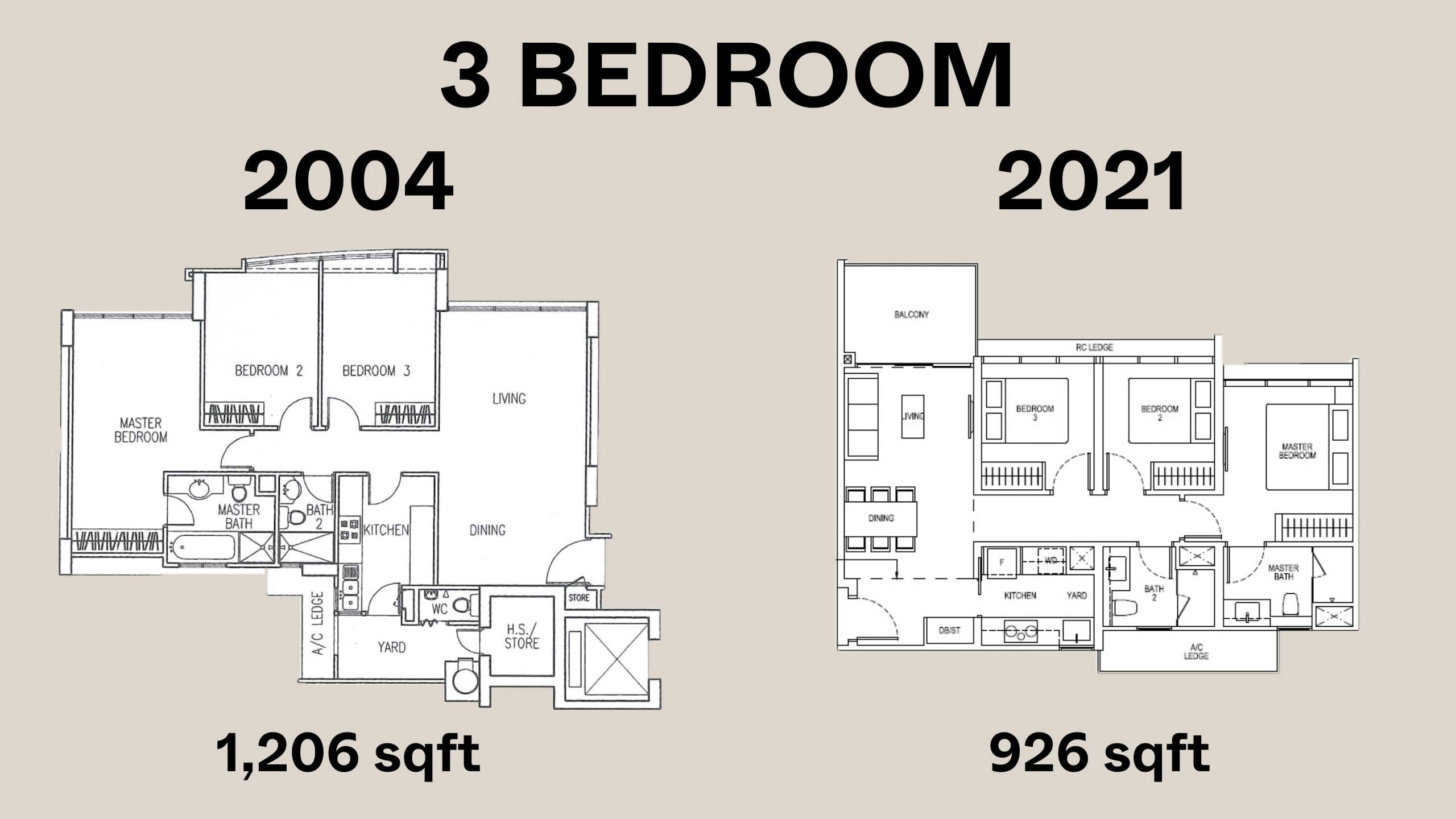
Get The Property Insights Serious Buyers Read First: Join 50,000+ readers who rely on our weekly breakdowns of Singapore’s property market.
A seasoned content strategist with over 17 years in the real estate and financial journalism sectors, Ryan has built a reputation for transforming complex industry jargon into accessible knowledge. With a track record of writing and editing for leading financial platforms and publications, Ryan's expertise has been recognised across various media outlets. His role as a former content editor for 99.co and a co-host for CNA 938's Open House programme underscores his commitment to providing valuable insights into the property market.
A recent report from Property Guru states that the size of three-bedder units has fallen; from around 1,700 to 1,800 sq. ft. in the 1980s, to around 1,000 sq. ft. today. It probably won’t surprise anyone that, as a general rule, homes in previous decades were bigger; but it is interesting to see how the 3-bedder, often considered the smallest viable “family unit”, has slowly gotten less comfortable:
Table Of Contents
- 1. Rising property prices and costs
- 2. URA is targeting only shoebox units, when regulating size
- 3. Older units may be bigger, but less space-efficient
- 4. Developers are pushed to clear out units on the ABSD deadline
- 5. The market has adapted to the loss of certain home features
- 6. Singaporean families are getting smaller
How big is a three-bedder unit anyway?
Let’s look at some of the recent launches:
- Sky Eden @ Bedok: 893 to 1,087 sq. ft.
- Lentor Modern (3-bedroom + flex): 969 to 1,130 sq. ft.
- Enchante (3-bedroom + study): 1,001 to 1,087 sq. ft.
- Liv @ MB: 1,119 to 1,302 sq. ft.
- North Gaia (Executive Condominium): 958 to 980 sq. ft.
- Bartley Vue: 947 sq. ft. (there is also a premium 3-bedder layout, that is from 1,044 to 1,066 sq. ft.)
To use HDB for comparison, this is roughly the size of a 4-room flat (915 to 1,022 sq. ft.).
Also in a recent conversation with a reader, for instance, it was pointed out to us that Floravale EC – built in 2000 and now privatised – has 3-bedders that are 1,390 sq. ft. in size.
Some other popular 3-bedders completed from the early 2000s include:
- Northoaks: 1,292 sq. ft.
- The Tropica: 1,238 sq. ft.
- Ballota Park: 1,313 sq. ft
- Crystal Rhu: 1,270 sq. ft.
Overall, 3-bedder units seem to have shaved off about 200 sq. ft. But there are some recent projects where the “shrinkage” is even more apparent:
Fort Suites, for example, was built in 2018. Despite having just 106 units in total, its 3-bedders are just 624 sq. ft. Meanwhile The Rise @ Oxley Residences – which is a mixed-use project – has 3 bedders that are a mere 667 sq. ft.
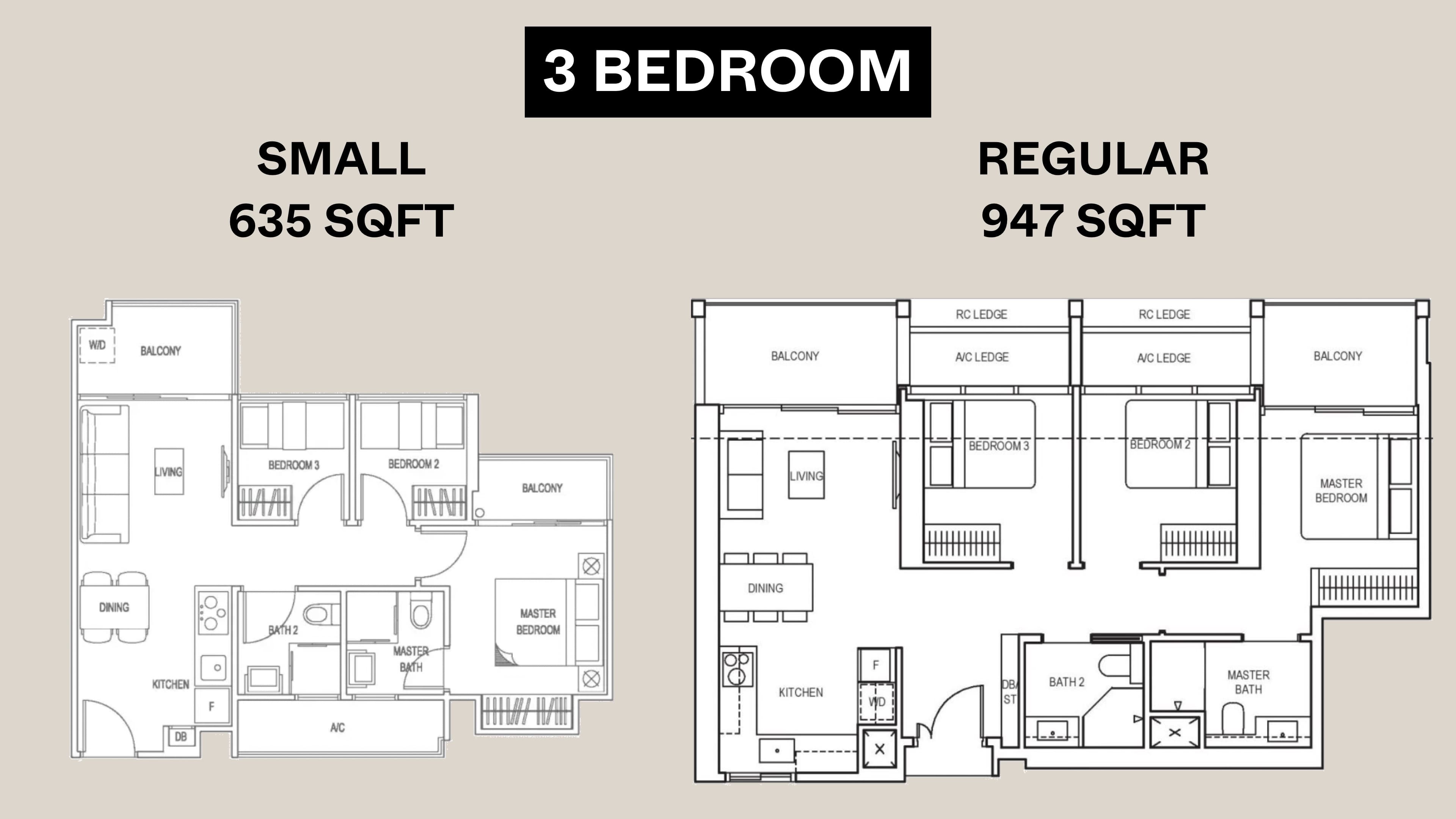
For now, these are still outliers; but we wouldn’t count on it staying that way.
To put things into context, here’s a look at the proportion of new sales by size range since 1995:
The size of our 3-bedders may get even smaller yet
What are the reasons? Well, they come down to:
- Rising property prices and costs
- URA is targeting only shoebox units, when regulating size
- Older units may be bigger, but less space-efficient
- Developers are pushed to clear out units on the ABSD deadline
- The market has adapted to the loss of certain home features
- Singaporean families are getting smaller
1. Rising property prices and costs
While there are some people that believe rising property prices is due to a developer’s greed to make more money, the truth is that there are many factors that have been contributing to the increase in property prices.
Rising land costs, construction costs, and land betterment charge rates, are just some of the reasons why prices have been going up.
This has resulted in a bigger gap between HDB resale and new launch condo prices – which will have some effect on the number of HDB upgraders.
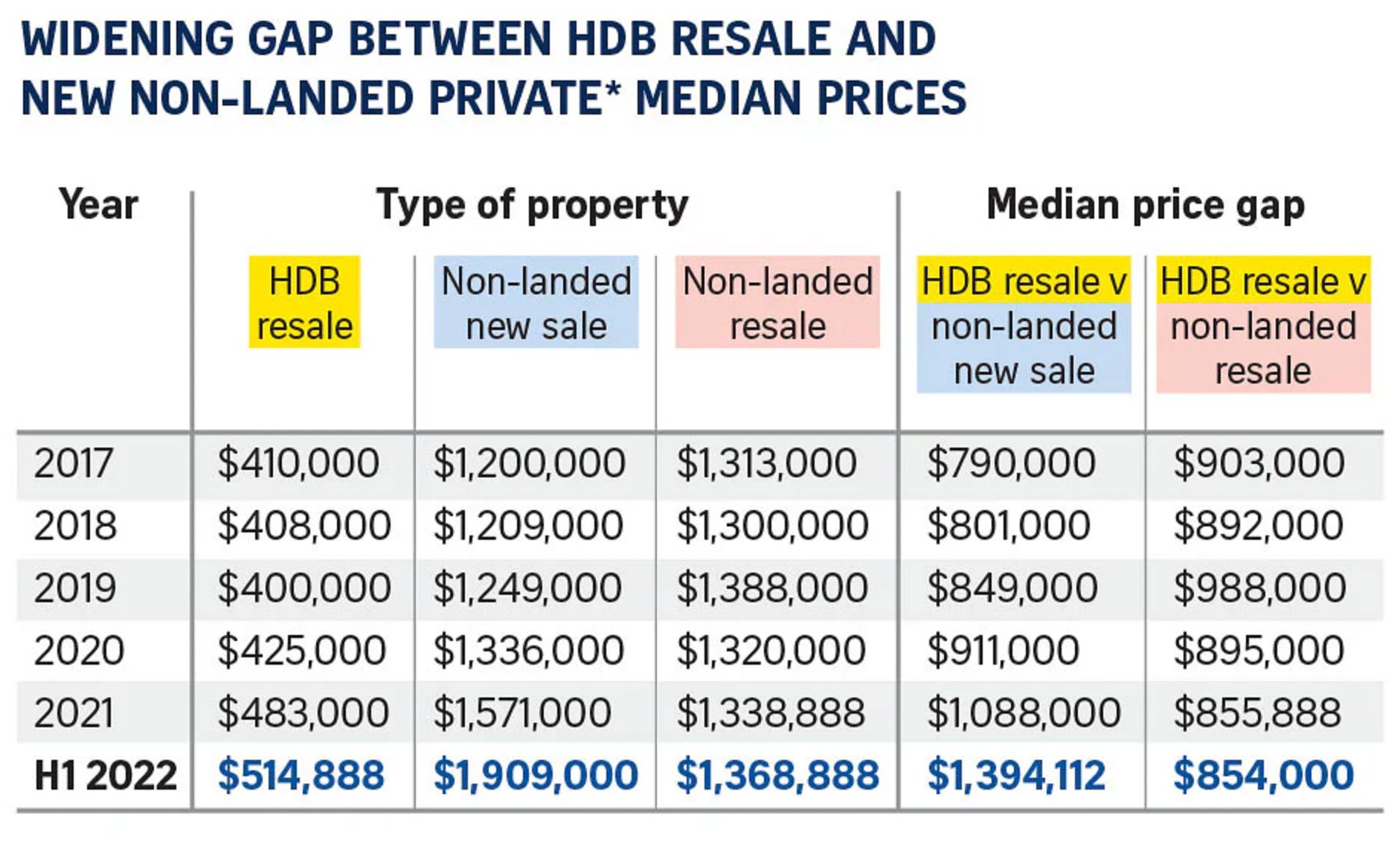
So as to avoid pricing too many people out, developers of mass market properties will naturally have to look into shrinking the sizes of units to keep prices at a palatable price point.
2. URA is targeting only shoebox units, when regulating size
If URA were to mandate minimum sizes for 3-bedders, that would be a quick end to the shrinking. But as is, URA seems content to target just shoebox units at this point (you can read about the recent curb in this article).
Here’s how it stacks up for central and non-central areas.
For developments outside The Central areas, the number of permissible units will be derived by dividing the Gross Floor Area (GFA) by 85 sq. m. (it was 70 sq. m. previously). This means that it will generally result in a lower number of units built per development, as well as bigger spaces.
For 9 other areas where shoebox units were particularly rampant (Marine Parade, Joo Chiat-Mountbatten, Telok Kurau-Jalan Eunos, Balestier, Stevens-Chancery, Pasir Panjang, Kovan-How Sun, Shelford and Loyang), the maximum number of units allowed will be by dividing the GFA by 100 sq. m. instead.
The treatment is different for central areas, as starting from 18th January 2023, residential developments (including mixed-use projects) must have a minimum of 20 per cent of units with a size of at least 70 sq. m. (approx. 753 sq. ft.).
This means that as shoebox units represent the most optimal way for developers to make the most money per square footage, this might have to translate to the other bigger units now for margins to be maintained. Again, this points to the possible shrinking of sizes of the other units (like 3 bedders).
More from Stacked
10 Old Iconic Private Apartments In Singapore In The 1970s/80s: A Conversation With Finbarr & Samantha
Did you know that high-rise apartments have actually been accused of many unpleasant outcomes? Chief of these are themes like…
So if the developer can provide a similar quality of living space through efficient floor plans, we won’t need larger units like before (e.g., we can do with 1,000 sq.ft. what we can do with 1,200 sq. ft., once we deduct wasted spaces for corridors, big planter boxes, etc.)
3. Older units may be bigger, but less space-efficient
Some realtors spoke in favour of newer condos, saying that pure square footage isn’t a fair gauge.
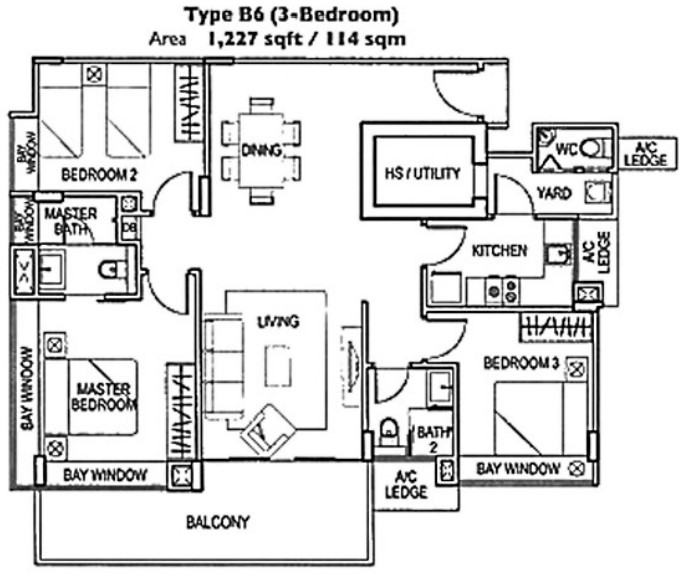
Even though some older resale condos may be bigger sized on paper, sometimes the combination of bay windows, planters, and hallways may mean that you aren’t getting much more space than a smaller new launch unit.
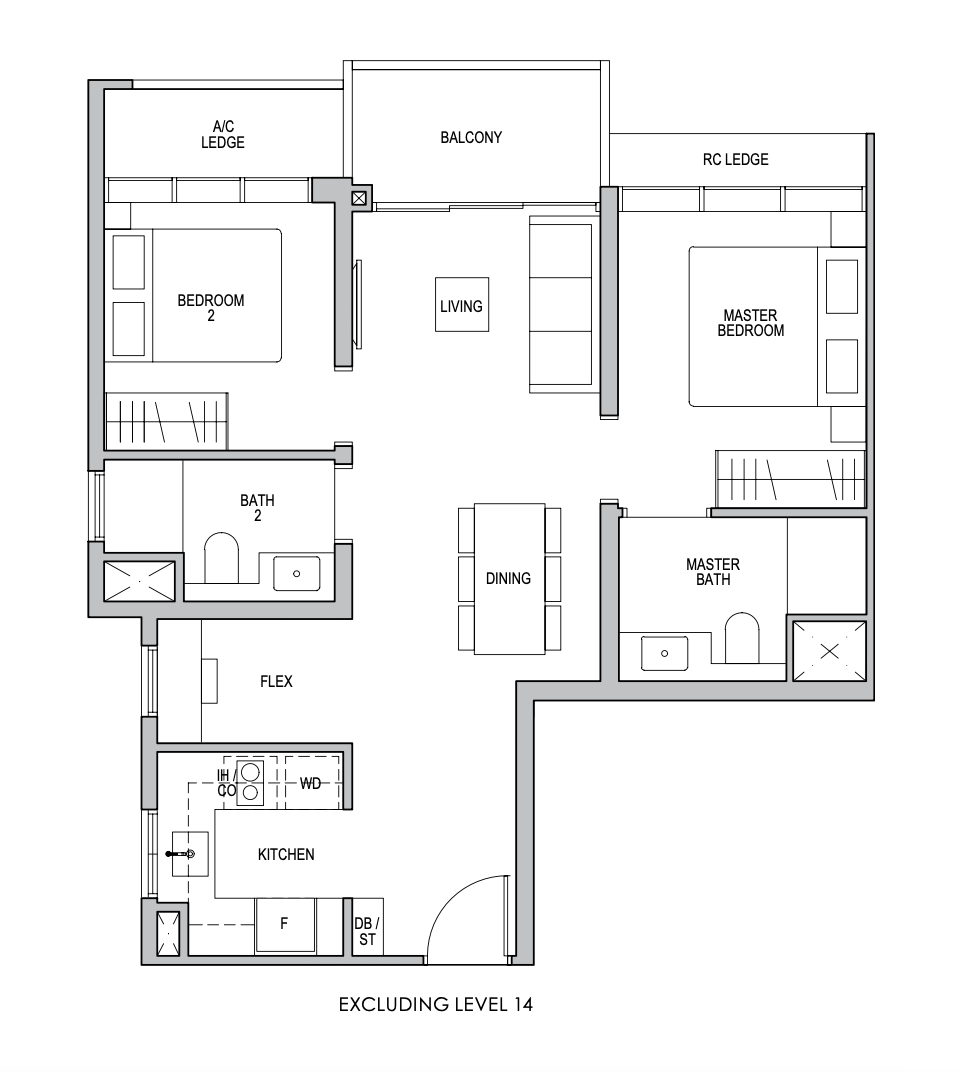
For example, while new launch condos may be smaller overall, they can feature dumbbell layouts, which remove the need for connecting corridors. Recent innovations also include “flex” arrangements, where parts of other rooms – such as the living room or master bedroom – can be converted into a small study or bedroom. This also helps with renovations, as there are fewer walls that need to be hacked, and a more versatile range of designs that can be chosen.
Developers also work more closely with providers of white goods today (e.g., washer/dryers, refrigerators, stoves). The appliances that come with newer condos tend to be more compact, and some have nooks or grooves that are specifically designed around these appliances.
Realtors also added that being more space efficient, with smaller square footage, can sometimes mean lower maintenance fees for bigger projects. This is because condo share values are usually assigned based on unit sizes.
4. Developers are pushed to clear out units on the ABSD deadline
One realtor noted that it was an issue of speed. A larger 3-bedder would also have a higher quantum, and higher quantum units typically take longer to sell.
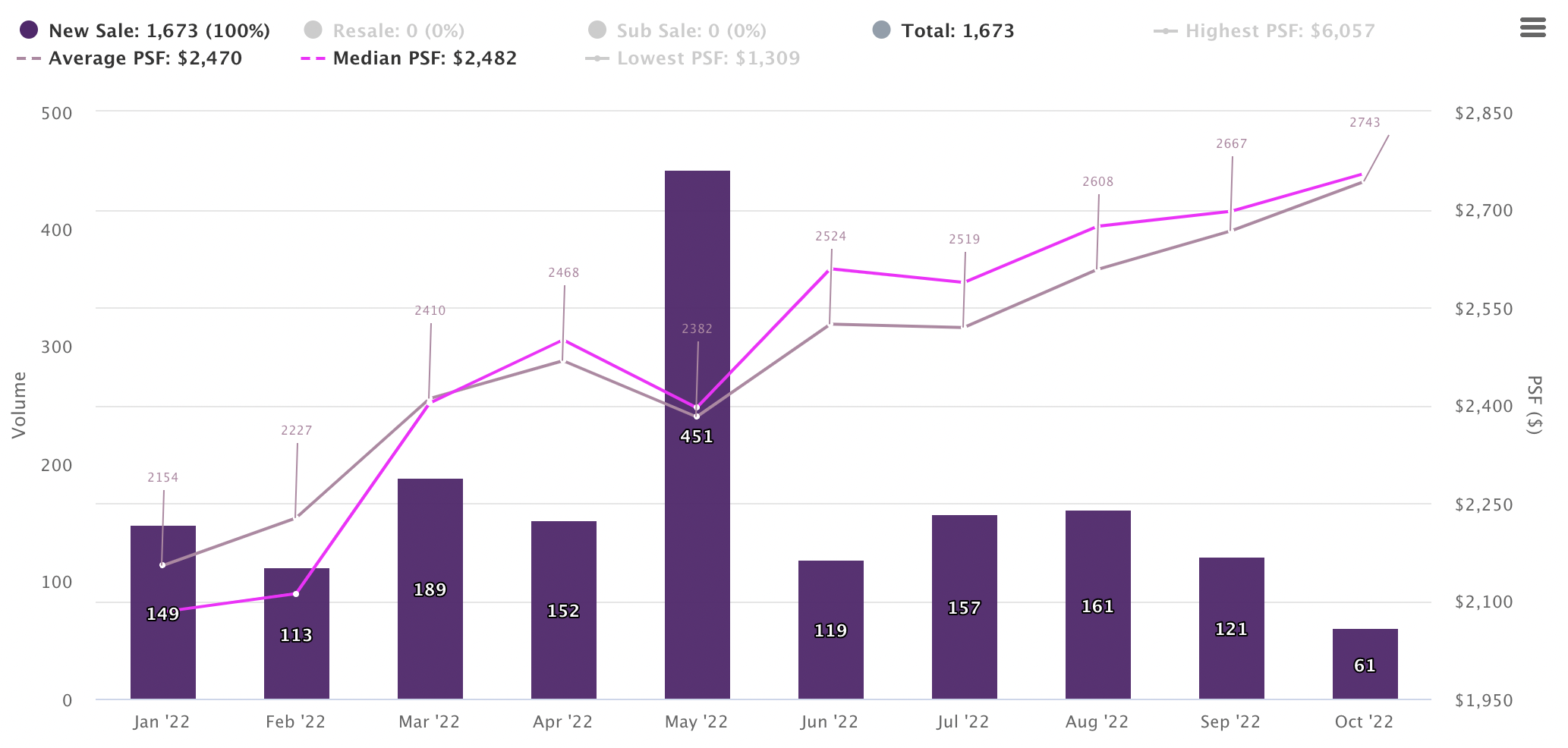
At current new launch condo prices of $2,470 psf in 2022 so far according to SRI research, a difference of just 200 sq. ft. amounts to $494,000; enough to place a 3-bedder beyond the bracket of the typical HDB upgrader.
In addition, developers are facing higher ABSD rates as of the December 2021 cooling measures (35 per cent ABSD, of which five per cent is non-remissible). As such, developers are driven to clear out their units within the five-year ABSD deadline; and this inclines them toward building smaller, lower-quantum units.
5. The market has adapted to the loss of certain home features
While some realtors remark that older units were less efficient (see point 2), we can’t help but feel it’s not just “wasted space”. Older units tend to have certain features that are now uncommon, or vanished.
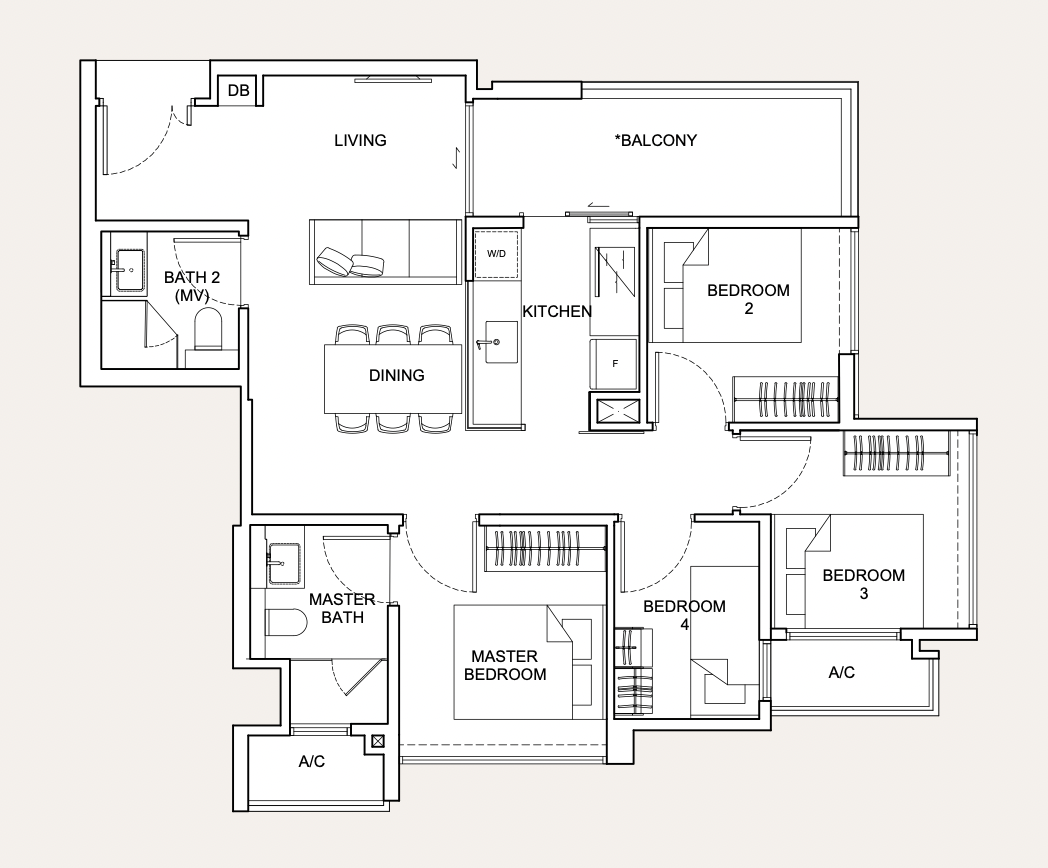
One example of this would be the service yard – there are fewer new launch units that feature this (more unit types with the word compact added to them), and it’s tougher to store your bikes, and cleaning equipment, or just have a place to air-out laundry without the washer/dryer.
(If the authorities really want us to be “greener” by the way, service yards should be encouraged – it consumes a lot less power than the dryer). A walk around some newer condos may just surprise you at how the balconies just seem to be the place to dry clothes instead, as many of them don’t have a yard to do so.
Another example is the loss of the domestic helper’s room. Increasingly, we see domestic helpers using part of the living room or study.
As for the dining room, it may well be on its way to extinction – many families now eat in the kitchen or living room, and the square feet given over to dedicated dining space seems to shrink every year.
6. Singaporean families are getting smaller
Our households are shrinking, which you can read about here. We have more ageing residents living alone, and more households falling to just three members. Our families may not need as much space as we did in the ‘80s and ‘90s – and developers are adapting to this.
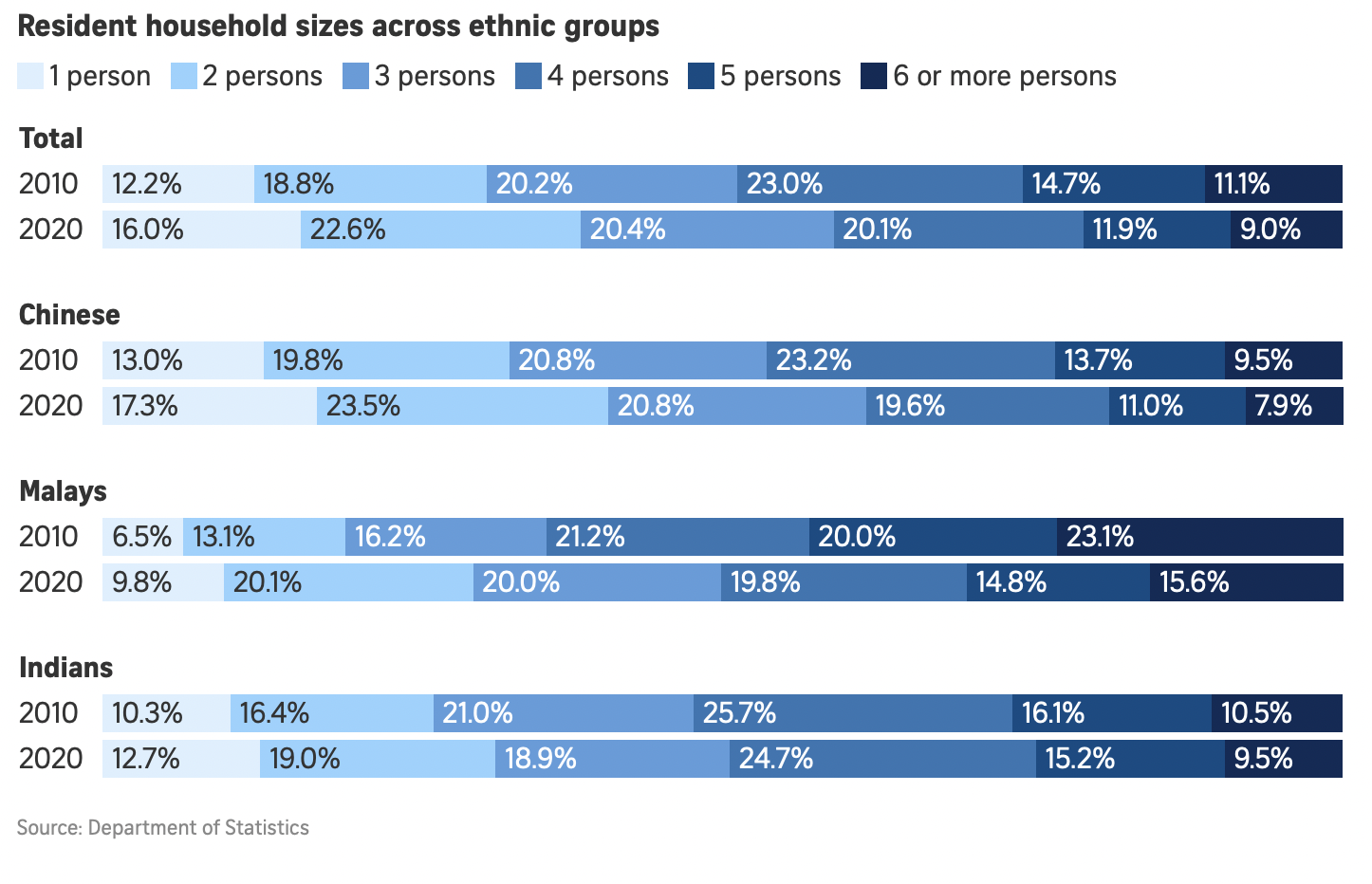
Also, consider our high home-ownership rate: most children are out of their parent’s home by their late 20s to mid-30s, and most families will find the grandparents already have homes of their own as well.
Couples who foresee this are probably happy to save several hundred thousand dollars, by shaving off a few square feet.
Nonetheless, if you are looking for more roomy units, we can help – follow Stacked for curated lists of 3-bedders in your budget, as well as any new opportunities in the Singapore private property market.
If you’d like to get in touch for a more in-depth consultation, you can do so here.
Ryan J. Ong
A seasoned content strategist with over 17 years in the real estate and financial journalism sectors, Ryan has built a reputation for transforming complex industry jargon into accessible knowledge. With a track record of writing and editing for leading financial platforms and publications, Ryan's expertise has been recognised across various media outlets. His role as a former content editor for 99.co and a co-host for CNA 938's Open House programme underscores his commitment to providing valuable insights into the property market.Read next from Property Market Commentary

Property Market Commentary A Wave Of New HDB Resale Supply Is Coming In 2026: Here’s Where To Find Them

Property Market Commentary 5 Key Features Buyers Should Expect in 2026 New Launch Condos

Property Market Commentary What “Lucky” Singaporean Homebuyers Used To Get Away With — That You Can’t Today
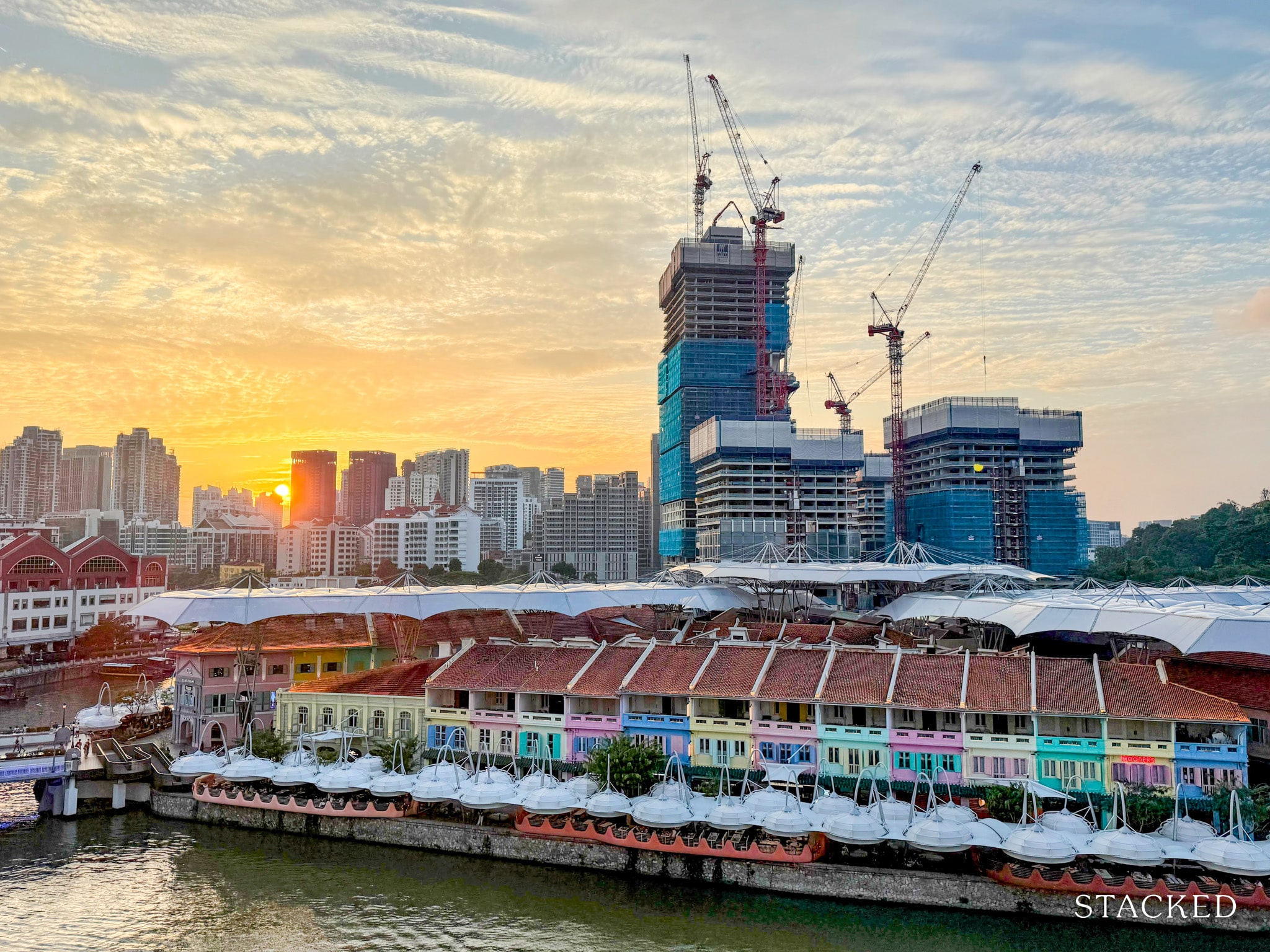
Property Market Commentary 7 Close To TOP New Launch Condos In 2026/27 For Those Looking To Move In Quick
Latest Posts

Landed Home Tours Why Singaporean Families Are Looking At This Landed Enclave From Around $4M

Singapore Property News Lentor’s First Condo Is Complete — The Early Profits May Surprise You

Property Advice We Own A $800K 1-Bedder And A $1.1M 3-Bedder: Is It Possible To Upgrade To A 4-Bedder Condo?

On The Market These Are Some Of The Cheapest 5-Room HDB Flats Left In Central Singapore

Pro This 698-Unit Ang Mo Kio Condo Launched At The Wrong Time — And Still Outperformed Peers

Singapore Property News $281.2M in Singapore Shophouse Deals in 2H2025 — But That Number Doesn’t Tell the Full Story

Property Investment Insights These Resale Condos In Singapore Were The Top Performers In 2025 — And Not All Were Obvious Winners

Singapore Property News CapitaLand–UOL’s $1.5 Billion Hougang Central Bid May Put Future Prices Above $2,500 PSF

Singapore Property News Why New Condo Sales Fell 87% In November (And Why It’s Not a Red Flag)

Pro How A 944-Unit Mega-Condo In Pasir Ris Ended Up Beating The Market
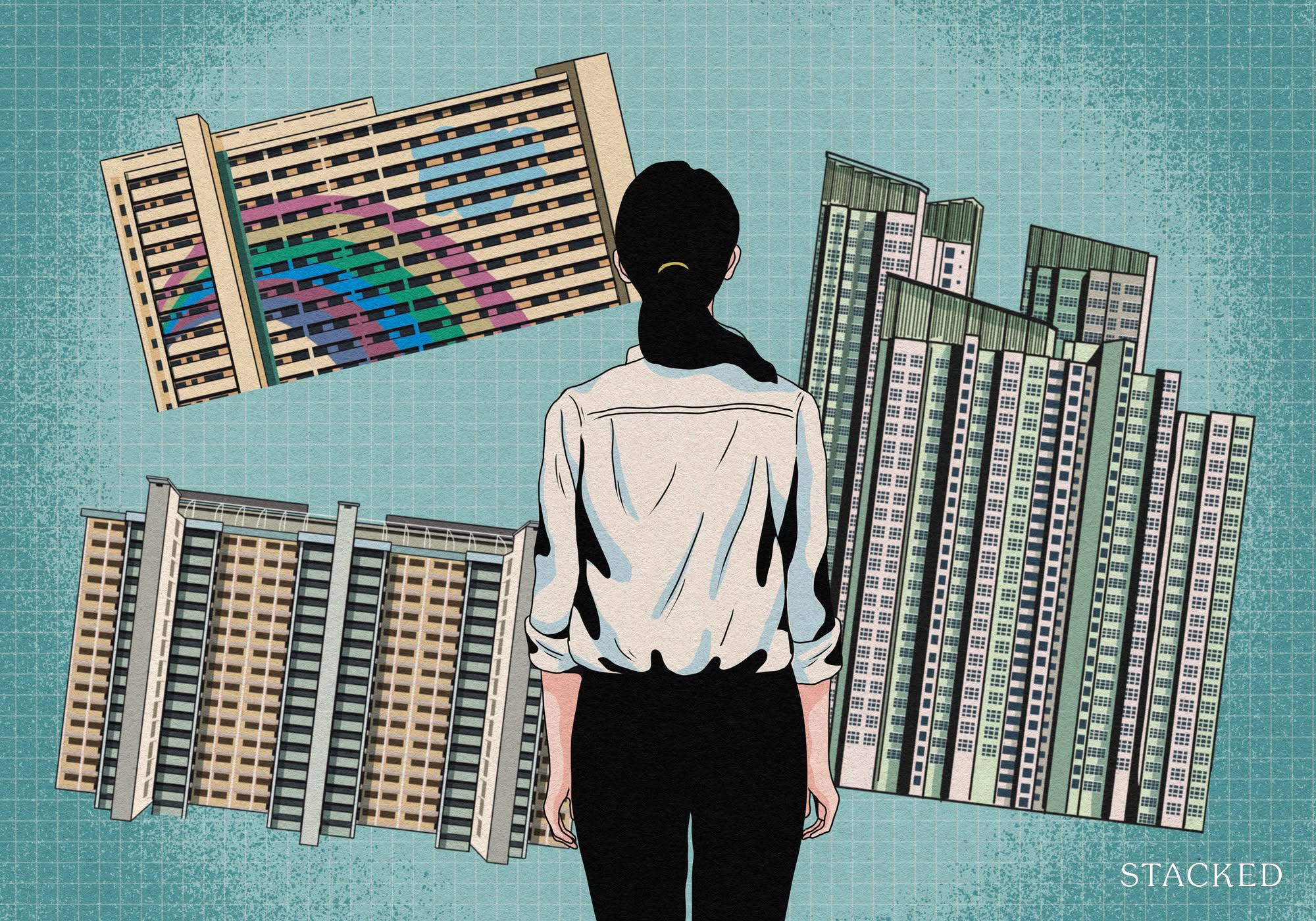
Property Investment Insights What Changed In Singapore’s Property Market In 2025 — And Why It Matters
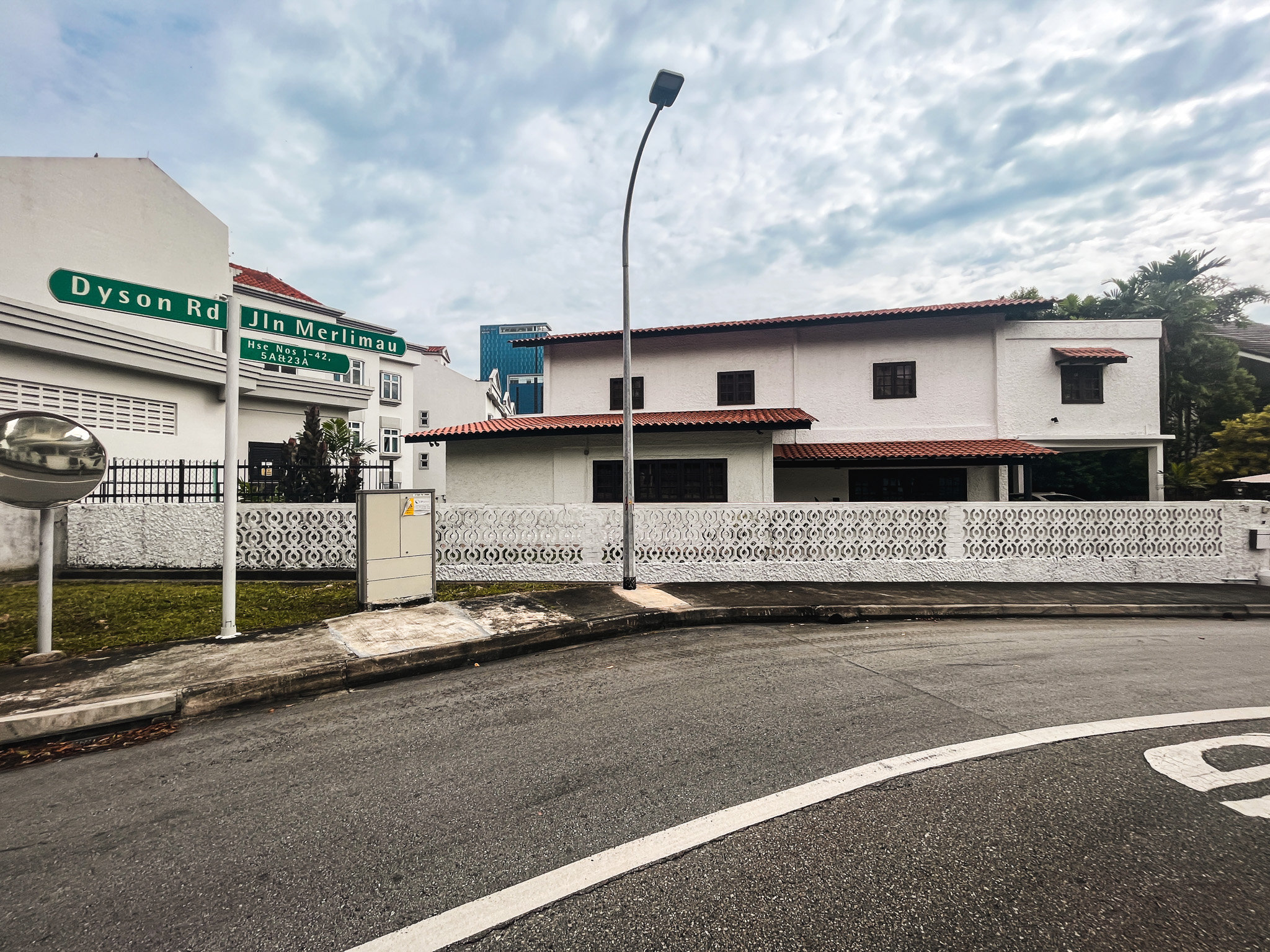
Editor's Pick We Toured A Quiet Freehold Landed Area Near Reputable Schools — Where Owners Rarely Sell

Singapore Property News How Much Smaller Can Singapore Homes Get?

Editor's Pick The Biggest Mistake Singaporeans Make When Analysing Overseas Property

Pro How Much More Should You Really Pay for a Higher Floor or Sea View Condo?
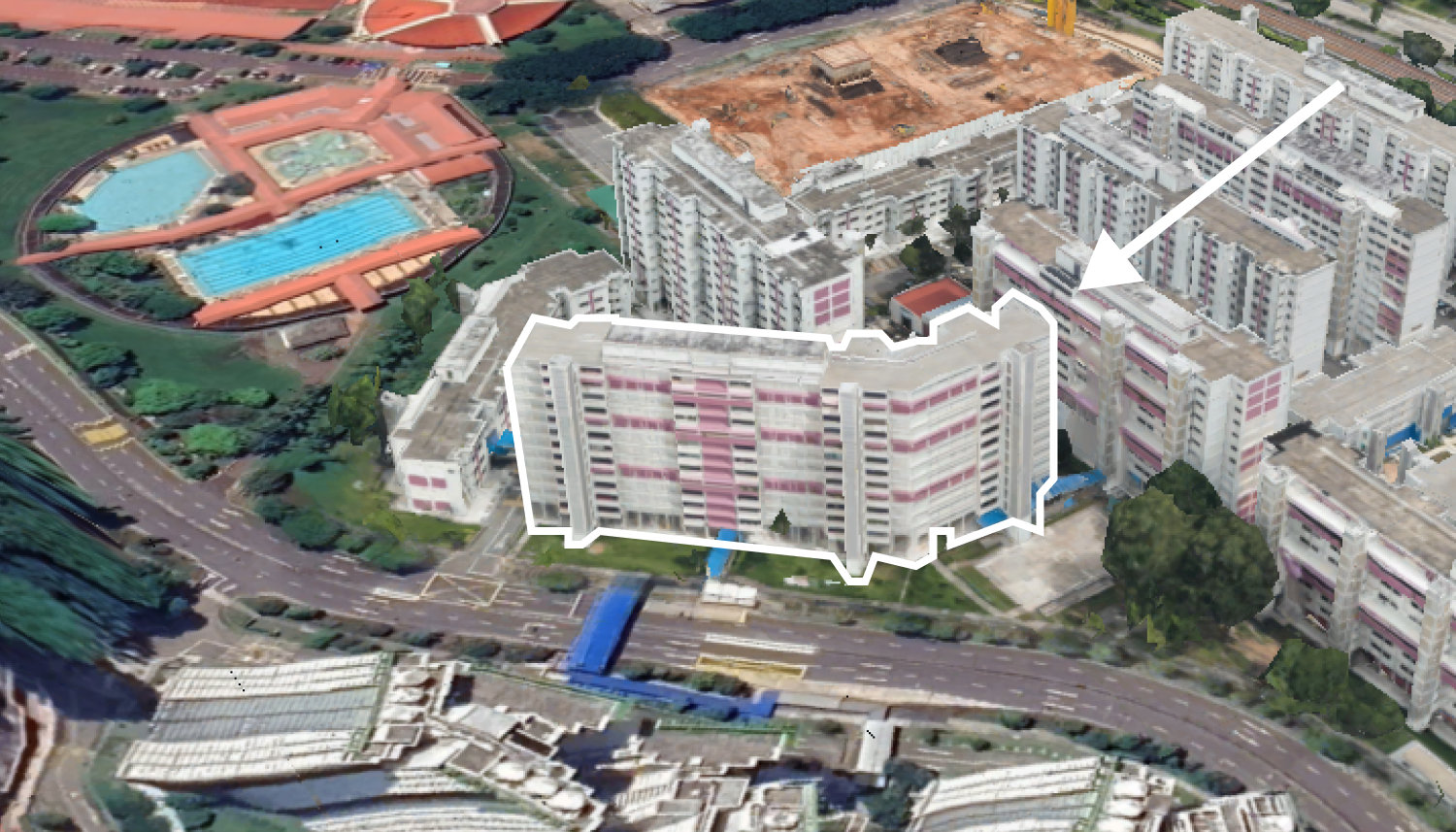


Creativity : Just get your ID to design multifunctional spaces. learn how to use a murphy bed , the ikea rognan and Ori transforming furniture to double up your space.